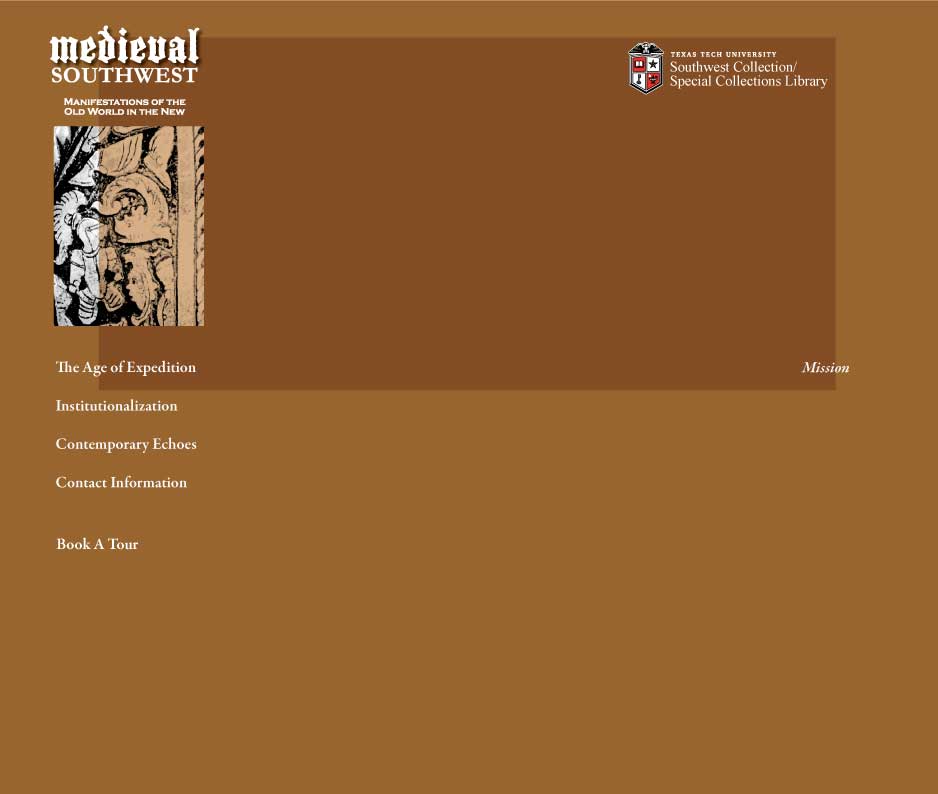
[above] "The Destruction of Mission San Sabá in the Province of Texas and the Martyrdom of the Fathers Alonso de Terreros, Joseph Santiesteban."
On display for this exhibit is a reproduction commissioned by the Presidio de San Saba Restoration Corporation of the famous mural. The mural was painted in Mexico City, perhaps in 1765, about 6 years after the mission was destroyed. The painting was commissioned by Don Pedro Romero de Terreros, cousin of one of the first priests killed in the attack. It is thought to be the earliest painting by a professional artist depicting an historical scene in Texas. The painting is still in the possession of Terreros family descendants in Mexico. The family shipped the mural to the United States for sale in the early 1990s. Controversy ensued and the Mexican government claimed the mural as national patrimony. It was eventually returned to Mexico.
San Sabá: Digging Through the Past
The lost San Sabá mission site was rediscovered by Texas Tech University in 1993. Tech archaeologists began excavations at the presidio by opening a field school there in 2000. The Texas Archeological Society joined Texas Tech’s efforts there by holding three field schools, beginning in 2003. Research continues today. One primary goal is to reconstruct the original layouts and construction materials and methods used at the mission and presidio sites. Today very little is visible above ground. Although the physical layout of the fort was depicted in two 1767 maps created during the Marquis de Rubí’s military inspection tour, buildings were changed and added to the fort both before and after this date, so Rubí’s maps are not completely reliable. Historical documents provide some clues, but a number of questions can only be answered through archaeology. By comparing the buildings and architectural features uncovered during the TTU and TAS field schools with the documentary record, it is possible to better understand the fort’s physical evolution.
 [right]
Grant Hall holds a small brass gun stock ornament found during excavations.
[right]
Grant Hall holds a small brass gun stock ornament found during excavations.
A second objective of archaeological excavations is the reconstruction of lifeways. The people of San Sabá left much behind. Food trash provides information on diet, pottery and metal fragments reveal trade patterns and access to supplies, religious items such as crucifixes and medallions illuminate spirituality. Military artifacts reveal the preparedness of the garrison to defend the fort, although their recycling underscores the overall poor conditions. Archaeology at the presidio provides an opportunity to study what life was like on a day-to-day basis for the people who called this place home for more than a decade.
The Presidio Restoration Committee and the local community of Menard hope some day to reconstruct the fort. Although only in its preliminary stages, archaeological exploration of the presidio and mission of San Sabá, conducted by Texas Tech and other organizations, will continue to inform us about this most spectacular site and the people who lived there.
Institutionalization -- San Saba -- Mission -- Presidio -- Music -- Globalization
